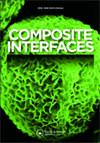碱处理竹纤维对沥青混合料性能的影响
IF 2.4
4区 材料科学
Q3 MATERIALS SCIENCE, COMPOSITES
引用次数: 0
摘要
摘要竹纤维是一种具有生态效益的天然纤维,是替代木质素纤维用于道路的最佳材料之一。木质素纤维由于其粘附性、分散性和亲水性较差,在沥青混合料中难以得到合理利用。已有研究发现,碱处理作为一种有效的处理方法,可以有效降低植物纤维的亲水性,提高其与基质的相容性。因此,研究碱处理对沥青混合料中竹纤维的影响具有重要意义。采用扫描电镜(SEM)和红外光谱(FTIR)研究了碱处理竹纤维的组成和微观结构,并采用纤维拉拔试验测试了碱处理前后竹纤维与沥青的附着力。此外,利用Schellenberg粘结剂排水试验建立连接方程,确定了竹纤维在沥青混合料中的分散速率。然后通过车辙试验、梁弯曲试验、浸没马歇尔试验、冻融劈裂试验和循环疲劳试验对竹纤维沥青混合料的性能进行了评价。结果表明,碱处理成功地消除了竹纤维外层的杂质,降低了竹纤维的亲水性,增强了沥青与竹纤维的相互作用,提高了沥青混合料的抗水损伤能力,具体表现为ABM的残余稳定性提高了7.8%,ABM的劈裂抗拉强度提高了12.2%。此外,降低了竹纤维的表面极性,减弱了团聚现象,使竹纤维在混合料中的分散率提高了9%,有效提高了沥青混合料的低温抗裂性能和疲劳性能。关键词:沥青混合料;竹纤维;碱处理;披露声明作者声明,他们没有已知的竞争经济利益或个人关系,可能会影响本文所报道的工作。数据可用性声明所有相关数据均在文中。本研究得到河北省科技攻关项目[JD-202005]资助;河北省科技项目[JD-202005]。本文章由计算机程序翻译,如有差异,请以英文原文为准。
Effect of alkali-treated bamboo fibers on the properties of asphalt mixture
ABSTRACTBamboo fiber is a natural fiber that is ecologically beneficial and one of the best materials to replace lignin fiber for roads, which is still difficult to utilize properly in asphalt mixtures owing to its poor adherence, dispersion, and hydrophilicity. Previous research has discovered that alkali treatment, as an effective treatment approach, may effectively lower the hydrophilicity of plant fibers and improve their compatibility with the matrix. As a result, it is vital to investigate the effect of alkali treatment on bamboo fibers used in asphalt mixtures. The composition and microstructure of bamboo fibers treated with alkali were investigated using SEM and FTIR methods, while the adhesion between the bamboo fiber and asphalt before and after alkali treatment was tested using the fiber pull-out test. In addition, the dispersion rate of bamboo fibers in asphalt mixture was determined by developing a connection equation using the Schellenberg binder drainage test. The performance of bamboo fiber asphalt mixtures was then evaluated using rutting tests, beam bending tests, immersion Marshall tests, freeze-thaw splitting tests, and cyclic fatigue testing. The results showed that the alkali treatment successfully eliminated impurities in the outer layer of the bamboo fibers and reduced their hydrophilicity, which enhanced the asphalt-bamboo fiber interactions as well as the asphalt mixture’s water damage resistance, specifically manifested as the residual stability of ABM was enhanced by 7.8% and the splitting tensile strength of ABM was raised by 12.2%. Furthermore, the surface polarity of the bamboo fibers was reduced, which weakened the agglomeration phenomenon and increases the dispersion rate of bamboo fibers in the mixture by 9%, efficiently improving the low-temperature cracking resistance and fatigue performance of asphalt mixtures.KEYWORDS: Asphalt mixturebamboo fiberalkali-treatedinterface adhesionfiber dispersionroad performance AcknowledgementsThis research was funded by the Science and Technology Project of Hebei Department (JD-202005).Disclosure statementThe authors declare that they have no known competing financial interests or personal relationships that could have appeared to influence the work reported in this paper.Data availability statementAll relevant data are within the paper.Additional informationFundingThe work was supported by the The Science and Technology Project of Hebei Department [JD-202005]; Science and Technology Project of Hebei Department [JD-202005].
求助全文
通过发布文献求助,成功后即可免费获取论文全文。
去求助
来源期刊

Composite Interfaces
工程技术-材料科学:复合
CiteScore
5.00
自引率
3.80%
发文量
58
审稿时长
3 months
期刊介绍:
Composite Interfaces publishes interdisciplinary scientific and engineering research articles on composite interfaces/interphases and their related phenomena. Presenting new concepts for the fundamental understanding of composite interface study, the journal balances interest in chemistry, physical properties, mechanical properties, molecular structures, characterization techniques and theories.
Composite Interfaces covers a wide range of topics including - but not restricted to:
-surface treatment of reinforcing fibers and fillers-
effect of interface structure on mechanical properties, physical properties, curing and rheology-
coupling agents-
synthesis of matrices designed to promote adhesion-
molecular and atomic characterization of interfaces-
interfacial morphology-
dynamic mechanical study of interphases-
interfacial compatibilization-
adsorption-
tribology-
composites with organic, inorganic and metallic materials-
composites applied to aerospace, automotive, appliances, electronics, construction, marine, optical and biomedical fields
 求助内容:
求助内容: 应助结果提醒方式:
应助结果提醒方式:


